12.01.2012 – I am in the process of applying for an MFA and it got me thinking about why I make art about climbing trees. It’s a long read and this is only the first part. I hope you stick around and enjoy!
Spring semester of my junior year at Amherst college I was sitting in a small classroom with 12 students and the visiting artist Francis Cape. We would spend most of our class time discussing issues of contemporary art and then Mr. Cape would challenge us to create work that reflected our discussion. One particular afternoon we were focusing on large public art and my immediate frame of reference is a large black geometric steel work called Gracehoper by Tony Smith that sits on the Waterfront of my hometown of Louisville, KY.

To me, that object has always been just one large playground apparatus that everyone tries to climb on. I stated to the class that because of this, I look at all public work as possible scalable structures. Mr. Cape thought this particularly interesting and it made me realize that I walk through life constantly rating the climbability of almost everything that is much larger than me. It was then that Francis Cape challenged me to create a work that would attempt to share this peculiar perspective to the world.
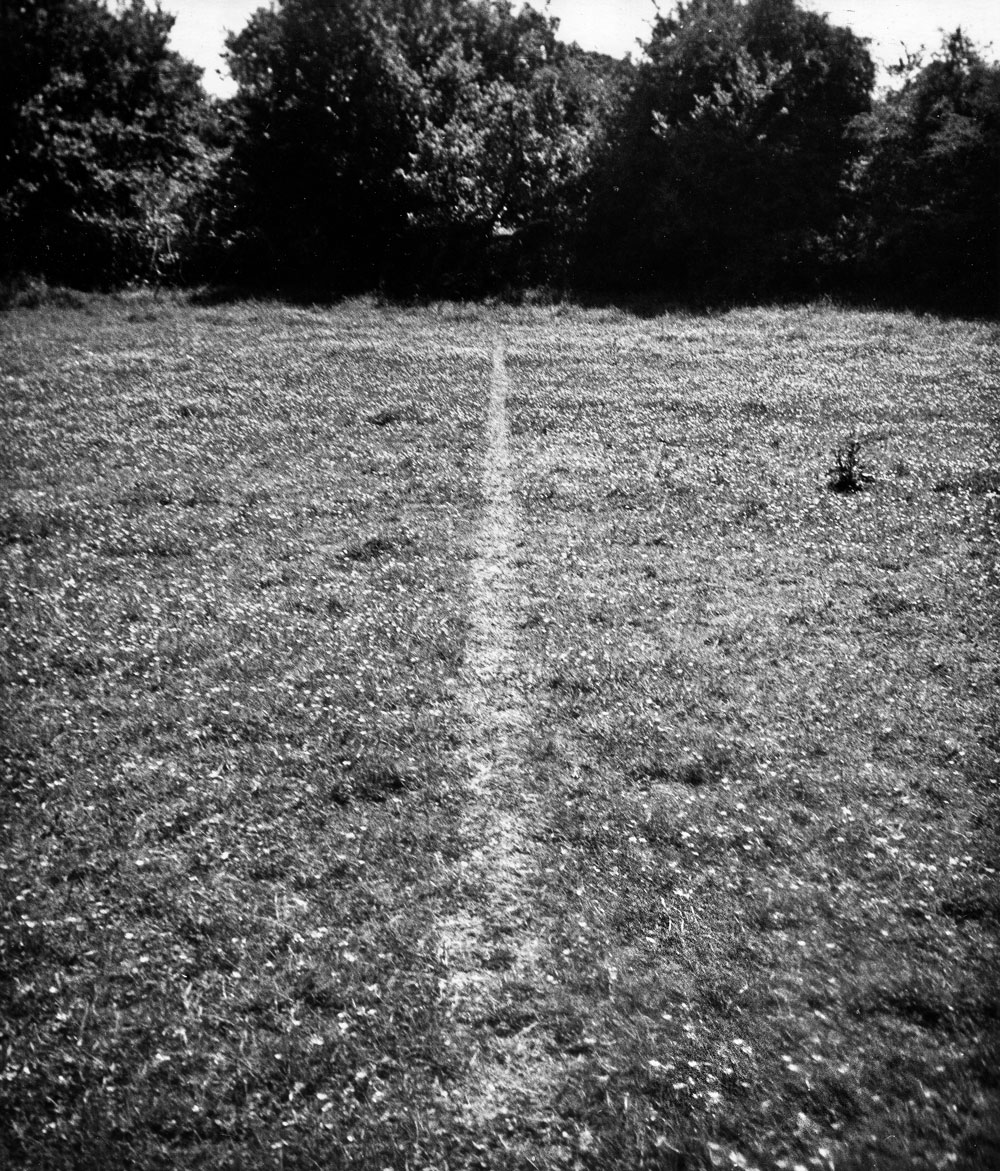
The resulting concept was inspired from Richard Long’s A Line Made by Walking from 1967. I rented a VHS recorder from the media library and strapped it onto my shoulder and head. I positioned myself at the edge of the sports fields of campus, hit record and walked in a straight line. Whatever object or obstacle I encountered I would climb over it. First were the tall chain link fences of the tennis courts and then the backstop of the baseball field. Then over the dugout and up the hill to the gym. I scaled the side of the building to the roof, traversed a few levels and then clamored back to the ground and continued onward. I went up and down a large pine tree in the field in front of the gym and then crossed the street. I walked diagonally across a residential lane until I reached the brick perimeter of the Amherst football field. I climbed over it, crossed the running track and pulled myself up the side of the aluminum bleachers. Across, down the other side, one more short fence and to the end of the practice field and shut off the camera.
The video was 27 minutes of the most bouncy and nauseating footage. (Sorry, no video, still only on VHS.) The only clear imagery came from my moments of contemplation on how to climb the obstacle, or at the top when I paused to catch my breath. The viewing in class elicited a wide response of emotion and reaction. It was all at once rejected and embraced by the fracturing group. My geometric drawings and paintings to this point had never received such a reaction. I had broken new ground by exploring a side of my life that I had never connected with art. But it took me some time to continue down this path.
The following fall semester of my senior year, Amherst had Anne Messner as visiting artist. Following the success of my class with Francis Cape, I cleared my schedule for her class. She structured our meetings by critiquing whatever current personal work we cared to share. I had spent all that previous summer creating these empty steel cubes filled with thin steel cables stretched into undulating curves of three-dimensional complexity.

They were small scale models exploring my interest in dividing up interior architectural spaces with simple line to create an immersive geometric world. For my first project in Ms. Messner’s class, I divided our classroom with twine running from all corners and intersected in the center. Like all my other previous geometric 2D work, the reaction was a yawn. The question to me was always, Why? My answer, I don’t know, I just like it. It was empty and always lead to dead ends.
So for the next project the following week, I went back to climbing. I had not made anything since that first video but my next idea came quickly. I combined my interest in utilizing interior space with my desire to share my perspective as a climber. I took a 100 feet of fiber rope, tied it to the stair rail of the top floor of the Fine Arts building and let it hang down through the stairwell to just above the basement floor.
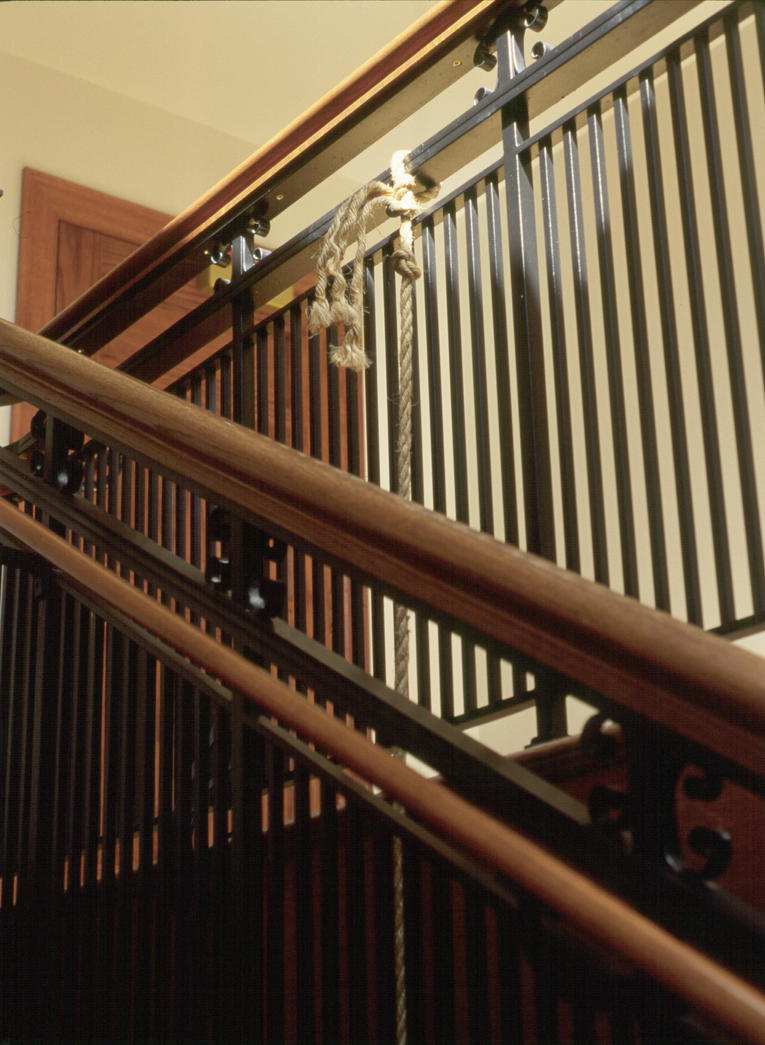
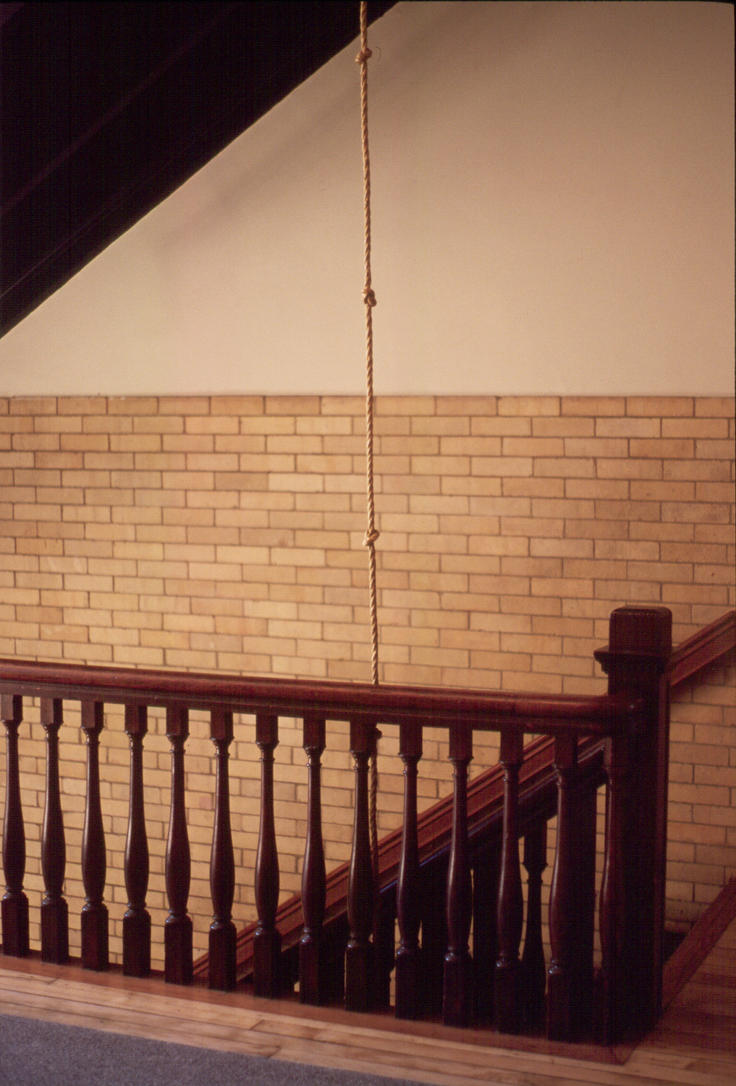
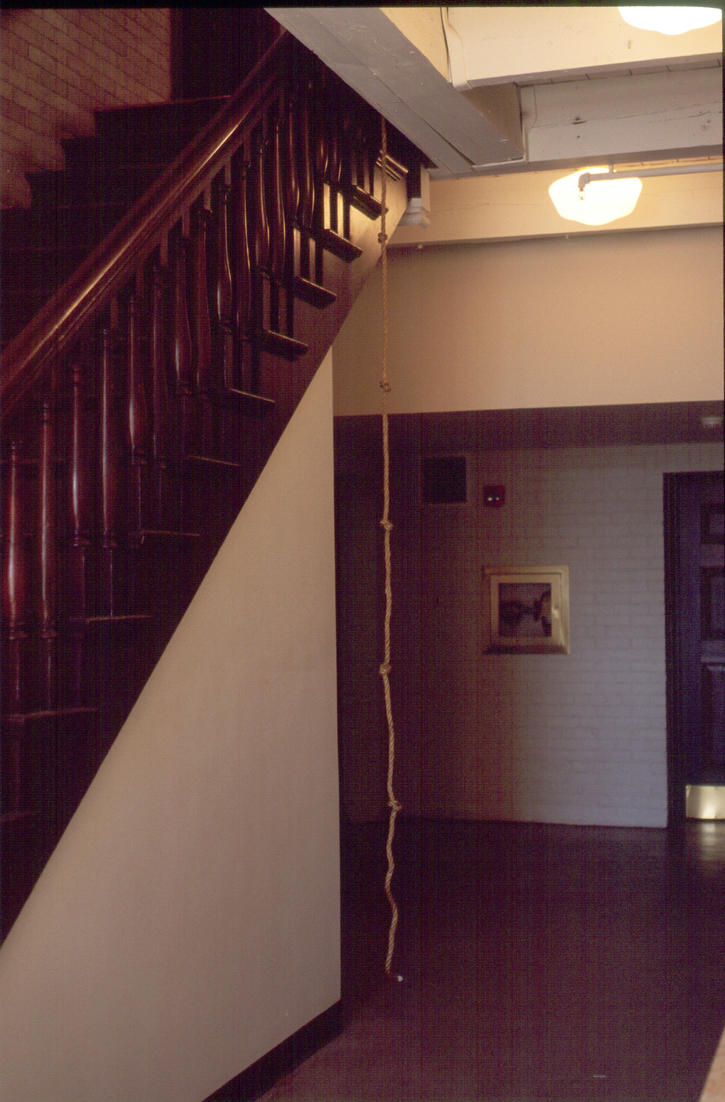
My hope was that people would think of a climbing rope and if they weren’t inspired to climb it, they could climb the stairs and imagine they were climbing the rope. I wanted to instill that urge to climb that I carry with me everyday.
The response from the class, though brief, was successful. The piece had accomplished its objective. More ideas began to flow and I wanted to move outside. The next week I took some neon orange vinyl marking tape and approached a large beech tree that stands next to the art building. I took a couple rocks to weigh down the end of the tape and I began to climb. Every branch that I used to climb I would wrap once with the tape. By the time I was 40 or so feet into the branches there was an orange mapping of my path. I tied off the end and climbed back down. My experience had been recorded visually and physically.
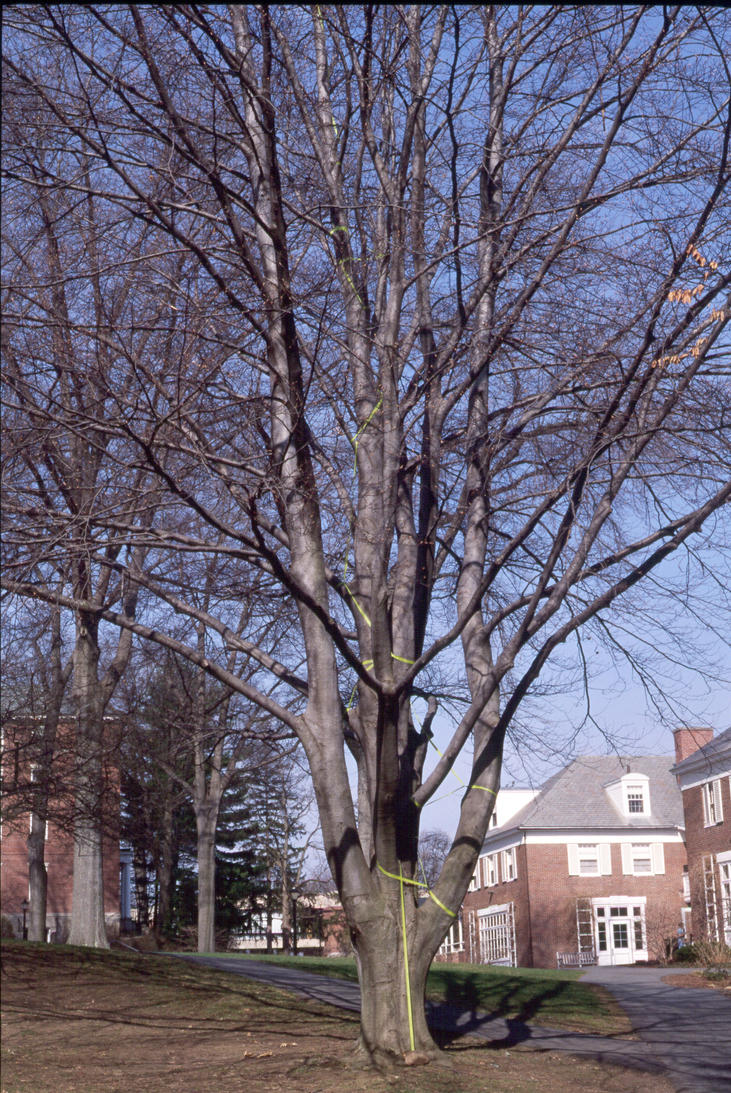
My classmates followed me outside as I led them to the tree. I said nothing to prepare them for what they were going to see. The response was great; wonder, shock, disbelief, horror, excitement, and connection. Everyone had some personal memory or experience with climbing a tree. I was on fertile ground. I narrowed my focus to tree climbing and for the first time in my creative life I could not tell if a work was successful until it was viewed by others. This social completion of my work drove me to more and more ideas. I no longer was forced to make an arbitrary decision about when a piece was done. It wasn’t some illusive aesthetic response that forced me to put down my brush. I had these simple ideas and goals that I was trying to accomplish. I wanted people to climb trees, or imagine they were. I wanted to create the desire to climb or give them the view from up in the tree without them having to climb at all. Every project was my attempt to share something about me and my experience of the world and was only complete when interacted with. It changed my entire understanding of what it meant to make art.
More work from my senior thesis: Sculpture of the Climb
Soon to come in Part 2: my post-collegiate lull and eventual resurrection with the Daily Climb project.
